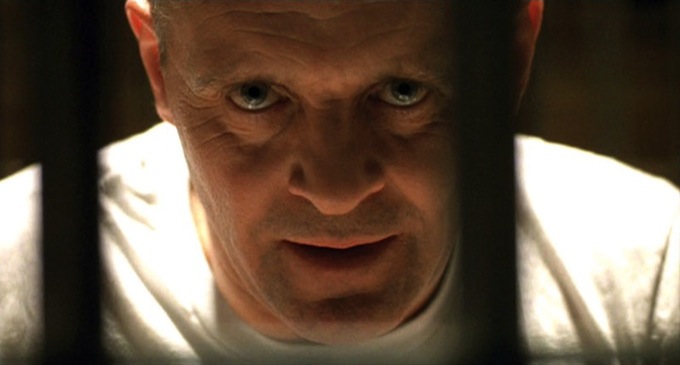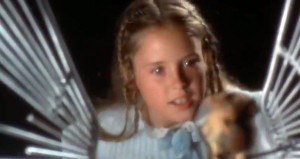 Buried Alive Film Festival and Splatter Cinema Presents the rare Italian original cut of DEEP RED (1975); Dir. Dario Argento; Starring David Hemmings and Daria Nicolodi; Saturday, November 14 @ 10:00 p.m.; Synchronicity Theater; Tickets $10 (or included with a $50 festival pass) here; Trailer here.
Buried Alive Film Festival and Splatter Cinema Presents the rare Italian original cut of DEEP RED (1975); Dir. Dario Argento; Starring David Hemmings and Daria Nicolodi; Saturday, November 14 @ 10:00 p.m.; Synchronicity Theater; Tickets $10 (or included with a $50 festival pass) here; Trailer here.
By Aleck Bennett
Contributing Writer
As part of the Buried Alive Film Festival, Splatter Cinema will be hosting a 40th anniversary screening at Synchronicity Theater of what is, quite simply, one of the greatest thrillers ever made: Dario Argento’s groundbreaking giallo DEEP RED. To miss this in its rare Italian original cut (22 minutes longer than the US version), would be to offend the very gods of cinema, so it would be best to play it safe and plan to attend.
From the late 1920s forward in Italy, a series of cheap paperback editions of murder mysteries featuring eye-catching artwork was issued by the publishing group Arnoldo Mondadori Editore. The success of these editions led to other publshers to also release mysteries under their own banners while imitating Mondadori’s cover designs. The common design element? The color yellow used as a background. As a result, over time all murder mysteries in Italy would come to be called “yellow.” Or, in Italian, giallo.
Mario Bava set in stone the tropes and archetypes of the cinematic giallo in the early 1960s with films such as THE GIRL WHO KNEW TOO MUCH and BLOOD AND BLACK LACE. The wild success of these films—and their blending of brutal violence with stylish camerawork and set design, all set to equally stylish musical scores—led to a whole host of other filmmakers jumping on the giallo bandwagon and establishing themselves as forces to be reckoned with in the Italian film industry. Antonio Margheriti, Umberto Lenzi, Riccardo Freda…all dipped their toes into the waters of the giallo and built careers off their early successes. But none of them took the genre to new extremes like one particular filmmaker: Dario Argento.
 Beginning with his “Animal Trilogy” (THE BIRD WITH THE CRYSTAL PLUMAGE, CAT O’ NINE TAILS and FOUR FLIES ON GREY VELVET), Argento took Bava’s sense of visual style to a whole other level. Deep focus, graceful camera movements, exquisitely detailed set design and carefully crafted compositions were the hallmarks of his aesthetic. His impossibly twisty plots and outstanding soundtracks worked hand-in-hand with his visual style and led him to be regarded as the Italian Hitchcock. But his work on the Animal Trilogy was merely a prelude to his masterpiece: DEEP RED (aka PROFONDO ROSSO).
Beginning with his “Animal Trilogy” (THE BIRD WITH THE CRYSTAL PLUMAGE, CAT O’ NINE TAILS and FOUR FLIES ON GREY VELVET), Argento took Bava’s sense of visual style to a whole other level. Deep focus, graceful camera movements, exquisitely detailed set design and carefully crafted compositions were the hallmarks of his aesthetic. His impossibly twisty plots and outstanding soundtracks worked hand-in-hand with his visual style and led him to be regarded as the Italian Hitchcock. But his work on the Animal Trilogy was merely a prelude to his masterpiece: DEEP RED (aka PROFONDO ROSSO).
Jazz pianist Marcus Daly (David Hemmings) witnesses a woman’s murder, and decides to investigate the case himself after realizing that a painting he saw in her apartment is now missing. Accompanied by reporter Gianna Brezzi (Daria Nicolodi), he tries to tie together the loose clues he has assembled and the one detail he cannot quite remember, while other women across the city are being murdered and he himself is targeted.
All of the elements are in play here. The black-gloved killer. The half-remembered detail. The outsider protagonist dismissed by the police as a troublemaker. The meddling reporter. The brutal violence. But Argento assembles these key tropes into something wholly new and original. Visually, Argento uses art in general, and painting in particular, as a recurring thematic element. Beyond a painting holding a key detail that is needed to solve the mystery, key plot points are revealed via artwork. Argento even gives us a life-size, live-action depiction of Edward Hopper’s Nighthawks early on to establish the importance of the visual arts and their accompanying artifice in the film’s world. In a word, the visual style is audacious.
But not as audacious, perhaps, as the film’s musical score. After having worked with the celebrated Italian film composer Ennio Morricone on the Animal Trilogy, Argento wanted something contemporary. He initially turned to jazz musician Giorgio Gaslini for the film’s music, but was unhappy with the results. Instead, he decided to go in a progressive rock direction and eventually found kindred spirits in local band Goblin. Their remarkable score winds up being incredibly catchy, complex, sinister, subtle and bombastic—somehow all at the same time. Their music ended up being the perfect complement to Argento’s visuals, managing to capture the essence of one medium in another. The reception to their breakthrough work was so intense, and the pairing of group and filmmaker so perfect, that Goblin (or the band’s leader, Claudio Simonetti) would continue to work on-and-off with Argento through the decades up to his latest film, DRACULA 3D.
Argento would return to the giallo again several times over the course of his career, most notably in films like TENEBRE and OPERA, but none of his work within the genre comes close to this masterpiece. It’s nearly flawless. The only complaint that I have with it is that the humorous and romantic scenes between Hemmings and Nicolodi tend to dissipate the building tension felt throughout the film. But that is such a slight complaint in comparison to the riches on offer in this brutal but beautiful movie. To see it at all is a rare treat. To see it in its original Italian cut on the big screen is a thing that should not be missed by anyone interested in seeing a director firing on all cylinders, at the top of his game, regardless of genre.
Aleck Bennett is a writer, blogger, pug warden, pop culture enthusiast, raconteur and bon vivant from the greater Atlanta area. Visit his blog at doctorsardonicus.wordpress.com.




























